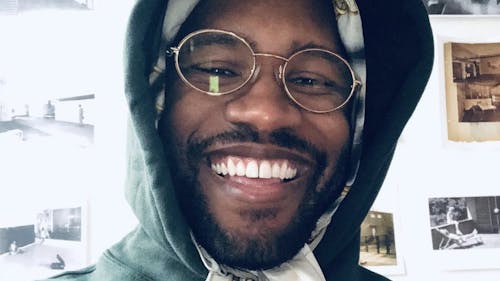Re-examining 'Blonde,' Frank Ocean's introspective album

Frank Ocean is one of the most enigmatic and talented artists of our generation, and he has amassed a substantial fanbase ever since he debuted as a part of the hip-hop collective Odd Future in 2007. Aug. 20 marked the fourth anniversary of his 2016 album "Blonde," and its impact on the music industry deserves a re-examination on how the album affected future music releases and popular culture.
One of the most notable qualities about "Blonde" is its unique and freeform song structure. On “Nikes,” the introduction of the album, Ocean leads us through two verses with a sudden beat switch in the second half of the song. On “Nights,” the song divides into three different sections and Ocean's voice deepens as the beat progresses. Scattered throughout the album are countless examples of abandoning traditional tendencies of songwriting, and these deviations highlight Ocean's evolution as an artist as he takes the listener on this musical journey.
The production on "Blonde" is minimalistic and abstract: Many of the songs feature lush and atmospheric guitars and a focus on texture instead of percussion. The prominent use of autotune and pitch shifting on Ocean's voice differentiates between different characters within the album. This take on different identities ties into the themes of duality and masculinity present in his lyrics.
The features on "Blonde" all add to create a universe within itself, but none of the featured artists outshine Ocean on any track. It is his album through and through and other artists help bring his body of work to life. André 3000’s verse on “Solo (Reprise)” is the most prominent feature, which stands as a testament to Ocean’s artistry. Other featured artists include background vocals from Beyoncé and production from James Blake.
"Blonde" takes heavy inspiration from themes of identity and Black existentialism, and many songs reveal how Ocean sees his life and identity from different viewpoints. Lyrics about youth and nostalgia permeate the album and give it an ethereal and timeless quality. His musings about sexuality are refreshing given his identity as a queer artist, and it gives representation to a group of people who have historically been repressed and silenced throughout society.
The release of "Blonde" set a precedent with its unique rollout. Most artists preview a single, do press runs and talk about their most high profile features. With no prior announcement, Ocean released a visual album on Aug. 19 called "Endless" exclusively on Apple Music under Def Jam Recordings.
It features 45 minutes of new music from Ocean, different from anything we've ever heard from him. On Aug. 20, 2016, Ocean released "Blonde" independently under his own label, which meant he received a much greater stream of profits from its sales. He also released a magazine along with the album titled "Boys Don’t Cry," which showcased visual inspiration for the album and documented his life since his 2012 album, "Channel Orange."
Ocean is an inspiration for some of the most popular artists of our time, and his influence can be seen throughout many different genres of music. Even with his high profile collaborations, he maintains a sense of genuineness with his poetic lyricism and multi-layered wordplay.
"Blonde" symbolized his independence from the music industry and allowed him to release music on his own terms. His emphasis on emotion and vulnerability makes his music timeless and powerful, and his social media presence and personality all contribute to his image as an artist. He's a blueprint for many artists, and his influence in the music industry will undoubtedly become even more powerful as the years go by.



